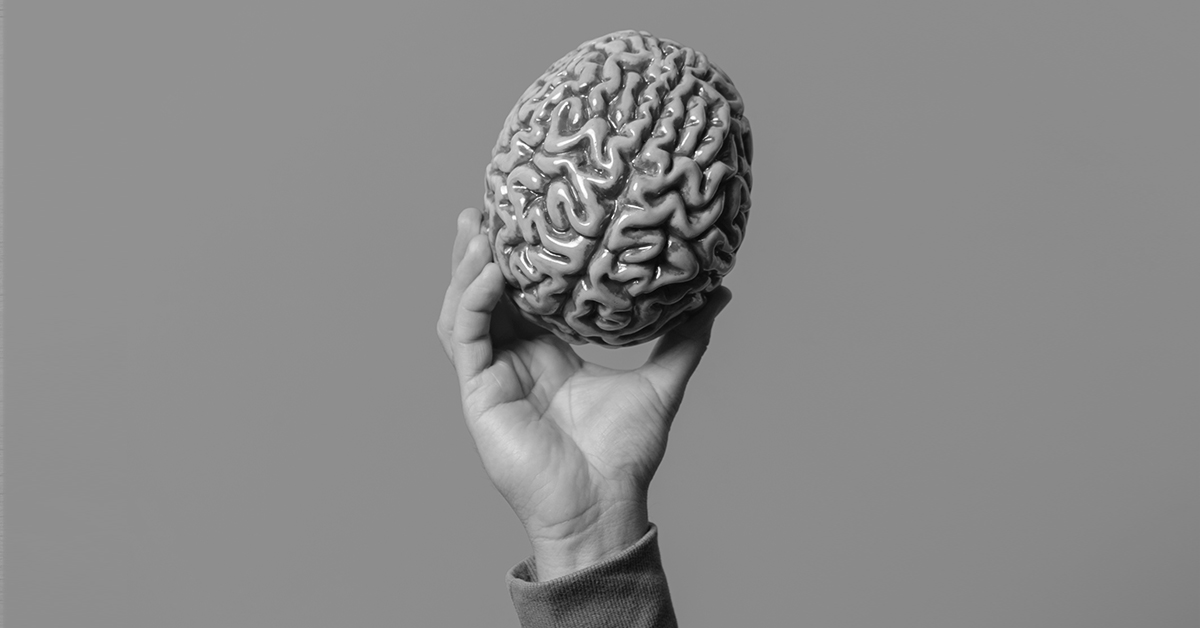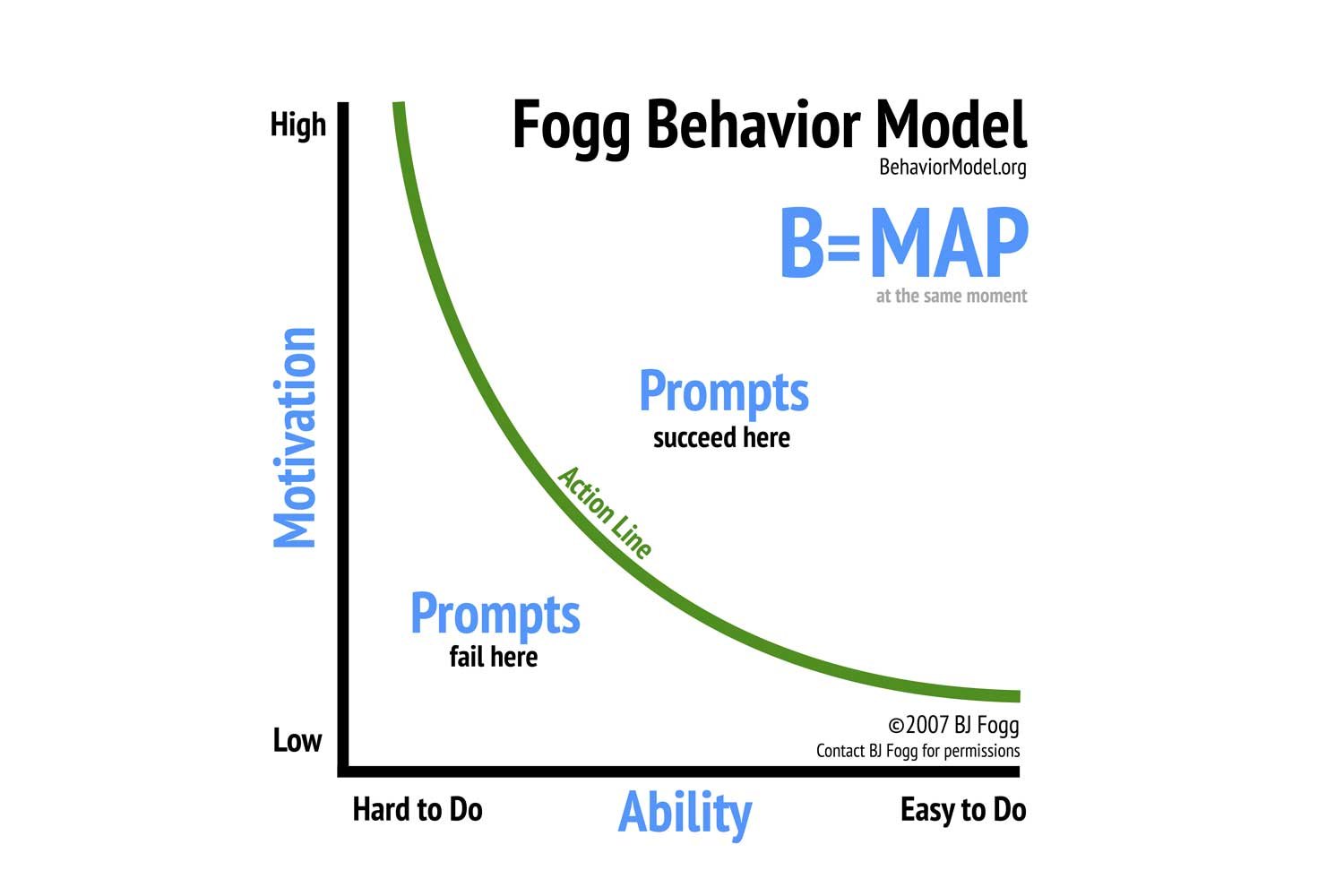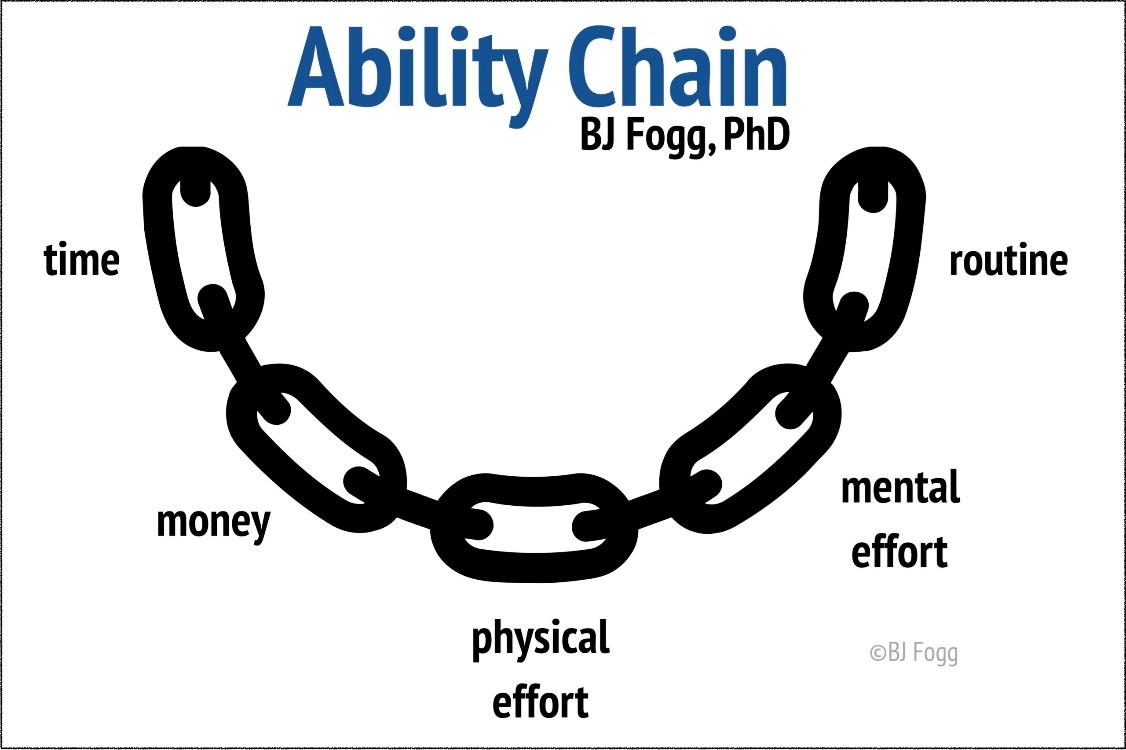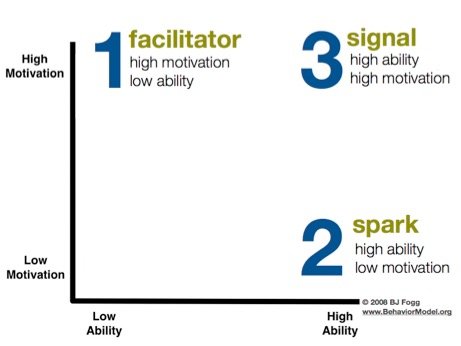Would you like to adopt better routines, but fail every time you try? Don’t worry. B=MAP will help you develop habits little by little and without any major complications.

Every so often, we decide to change our habits, but the reality is that we don’t always succeed.
– We joined the gym in January and stopped going in February.
– We promised to read for a little while every night, but we fell asleep watching TikTok challenges.
– We decided to save money to buy a new car, but we squandered our paychecks on unnecessary luxuries.
What can we do to change our habits and consolidate new ones over time? B. J. Fogg’s behavior change methodology, based on the B=MAP behavior model, can greatly help us achieve our goals.
1. The B=MAP behavior model
Dr. B. J. Fogg is widely known for his B=MAP behavior model and his methodology for generating new habits.
The B=MAP model identifies the three elements that intertwine to produce actions: Motivation, Ability, and Prompts.
For example, when we are motivated to play the piano, we have sufficient ability to do so, and when something prompts us to sit down at the instrument, we play the piano.
In general, the less capable we are, the more motivated we should be to do something. At first, playing the piano is difficult, and that makes us feel lazy about going to music school. However, over time we develop our musical skills and feel much more motivated to play.
The compensatory relationship between motivation and ability is shown in the following graph. Incentives that trigger action work when motivation is high enough for the ability.

2. Motivation in B=MAP
Motivation corresponds to our willingness to act.
B. J. Fogg distinguishes three sources of motivation: sensation, anticipation, and belonging.
Sensation is a hedonic motivator linked to pleasure and pain. Under normal conditions, we seek out situations that give us pleasure and avoid those that cause pain.
Anticipation is related to hope and fear. Hoping that something is possible motivates us to try to achieve it, while fearing an unfavorable situation triggers our impulse to flee.
Finally, belonging has to do with social acceptance and rejection. Human beings are imperfect animals who need the appreciation and recognition of others to survive and thrive.
For example, if we wanted to attract the locals to come and eat at our café, we could tempt them with tasty dishes, which would activate hedonic motivation, special offers, which would fuel the hope of getting a bargain, and a lively space full of good people, which would reinforce the feeling of belonging.
3. Ability in B=MAP
In the context of B=MAP, capacity should be understood as the ability to do something in a given context. Capacity depends on internal factors (such as knowledge) and external factors (such as resources). If I don’t know the rules of soccer, I can’t play it. But if I don’t have a ball, I can’t play it either.
B. J. Fogg highlights three ways to improve a person’s ability to do something: by training them, providing them with tools, and breaking down complex actions into smaller, simpler behaviors.
Training can be effective, but it is often hard work. For example, going to an English language school to learn the language is a sensible step, but at the beginning, it is normal to find it difficult.
Tools reduce the motivation needed to take action, but they must be well designed. This is demonstrated by applications such as Duolingo, which simplify the learning of new languages through games.
Finally, breaking down complex actions into simple behaviors is something that is almost always within our reach without too much effort.
In general, to ensure that someone has the ability to do something, the best thing we can do is simplify five variables of the action: time, money (and resources in general), physical effort, mental effort, and routine.

– An action is simpler in terms of time when it is short or we have a lot of time available.
– When it comes to money and resources, an action is simpler if we have a lot of money and resources or if the action is inexpensive and requires few things.
– When it comes to physical effort, an action is simpler if it does not require exceptional physical fitness.
– An action is also simpler if it can be performed without much attention, reflection, or mental effort.
– And, of course, an action is also much easier if it fits into our established routine and does not require us to change our usual behavior.
4. Prompts in B-MAP
Prompts are contextual elements that motivate behavior. Prompts include pop-up messages in apps, alarms, the most eye-catching dishes in a dining room, “Not drinkable water” signs, calls to action, and countless other things.
Fogg distinguishes between three types: facilitators, signals, and sparks.

If a person is motivated to do something but lacks the ability to do so, they need incentives to facilitate their behavior. Pedro, for example, wants to eat healthier but doesn’t know how to do it. What should he do? He could talk to a nutritionist and work with them to select a set of recipes for each day of the week. Then, he could set an alarm at cooking time that includes the recipes for the day. That way, he would be encouraging himself to prepare healthier meals, making his life easier.
Mary, on the other hand, is very motivated to eat healthily and knows many recipes. She therefore does not need any encouragement. All she needs is an alarm to remind her that it is time to start cooking.
Finally, Ernesto is a great cook, but very lazy. How could he motivate himself to prepare healthy meals? For example, by subscribing to a daily creative cooking newsletter. That could pique his curiosity and ignite his motivation.
5. How to develop new habits
To cultivate a habit, we need to align motivation, ability, and incentives on a recurring basis.
In his famous book Tiny Habits, B. J. Fogg proposes a 7-step methodology for habit formation.
1. Clarify the aspiration.
2. Explore behavioral options.
3. Address specific behaviors.
4. Start small.
5. Find a good incentive.
6. Celebrate successes.
7. Identify and solve problems, repeat and expand.
If, for example, I want to develop the habit of reading, the first thing I have to do is clarify my aspiration. What does reading regularly mean to me? Reading every day? Every week? Every month? How many pages? The goals of our habits must be clear and specific. That will allow us to know to what extent we are achieving them. A clear and specific goal would be to read 50 pages every day.
Secondly, we need to explore what we can do to achieve our goal. I can read on the subway on my way to work, during my lunch break, when I get home, or before going to sleep. All of these actions are behavioral options.
However, not all behavioral options are equally appropriate. Some are sure to demotivate us, and others we are not capable of doing. In my case, reading on the subway makes me dizzy, so I have to give up that behavioral option. I am also unable to read after eating because I fall asleep, and when I get home, I don’t feel like opening a book. The most beneficial behavioral option for me is to read before bed because it motivates me and I am able to do it. This realistic and fruitful action is what B. J. Fogg calls a Golden Behavior.
Now, even though I am able to read at night, I shouldn’t set overly ambitious goals at first, because I won’t be able to meet them. Starting small helps to consolidate the habit. Instead of setting myself the goal of reading 50 pages, I should commit to reading just 20.
And how can I encourage myself to read? Since I am motivated and have good reading skills, a simple cue is enough: leaving the book I am reading on my bedside table. Seeing it is enough to encourage me to read.
If we manage to maintain a habit, we should feel proud and show it by celebrating. For example, when I finish a book, I can celebrate by going to the bookstore to buy a new one.
Finally, for a habit to stick, we have to identify the friction points and address them as soon as possible. In my case, if I find that reading essays makes me sleepy, I should change genres, at least until the habit is more robust.
Conclusions
If we want to develop a habit, whether our own or someone else’s, we must identify the motivation, capacity, and triggers required for the behavior and then develop a strategy to make them happen repeatedly.
B. J. Fogg’s behavior change methodology is a good starting point for developing new personal habits. However, in the context of large companies or institutions, it must be implemented with the help and supervision of behavioral science professionals. These are very complex environments in which, to ensure effectiveness, systematic and rigorous experimentation is necessary.
Does your organization need to foster new habits among its employees, customers, or users? Contact us and we will help you achieve your goals! Contact us and we’ll help you achieve your goal!
Are you interested?
Get in touch!
